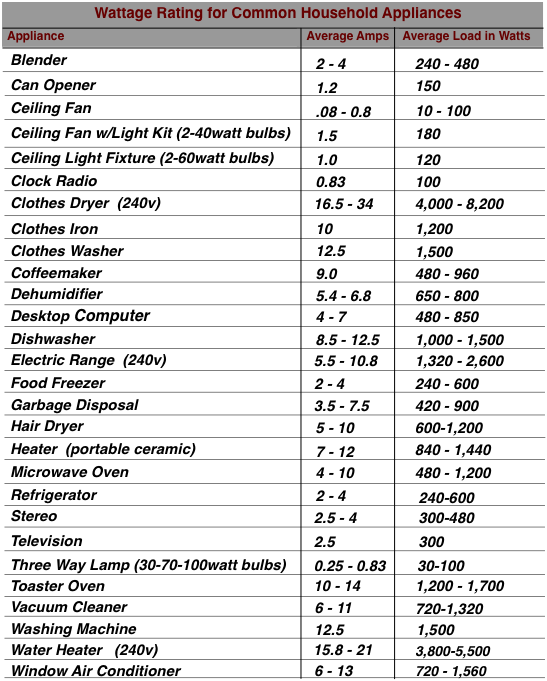Calculating Circuit Load
by: Dale Cox
Check permit requirements before beginning electrical work.
How to read these diagrams.

An overloaded circuit can heat up to extreme temperatures creating a serious fire hazard and a threat to life and property. To protect against an overload always know the capacity of the circuit and how much power is drawn by the appliances before adding a new outlet. To calculate the capacity multiply the amp rating of the breaker by the voltage of the circuit or:
(Breaker Amps X Branch Voltage = Watts)
For a 120 volt circuit with a 15 amp breaker this would be 1800 watts, the total load from lighting and appliances should not exceed 80% of this total, or 1440 watts. Likewise the total amps drawn on the circuit at one time should not exceed 80% of the breaker capacity. For 15 amp circuits this would be 12 amps.
Finding the Wattage for Appliances
The wattage rating information for a particular device may be on a label or imprinted on the back somewhere. If no wattage rating is displayed, the load can be calculated by multiplying the amps drawn (appliance amps) by the voltage of the circuit. If neither the amps nor the wattage ratings for a device is known, the chart below lists common household appliances and the average watts drawn for each to aid in calculating the load of a circuit.

 Add a New Light Fixture
Add a New Light Fixture Add a New Wall Outlet
Add a New Wall Outlet Find an Electrical Source
Find an Electrical Source